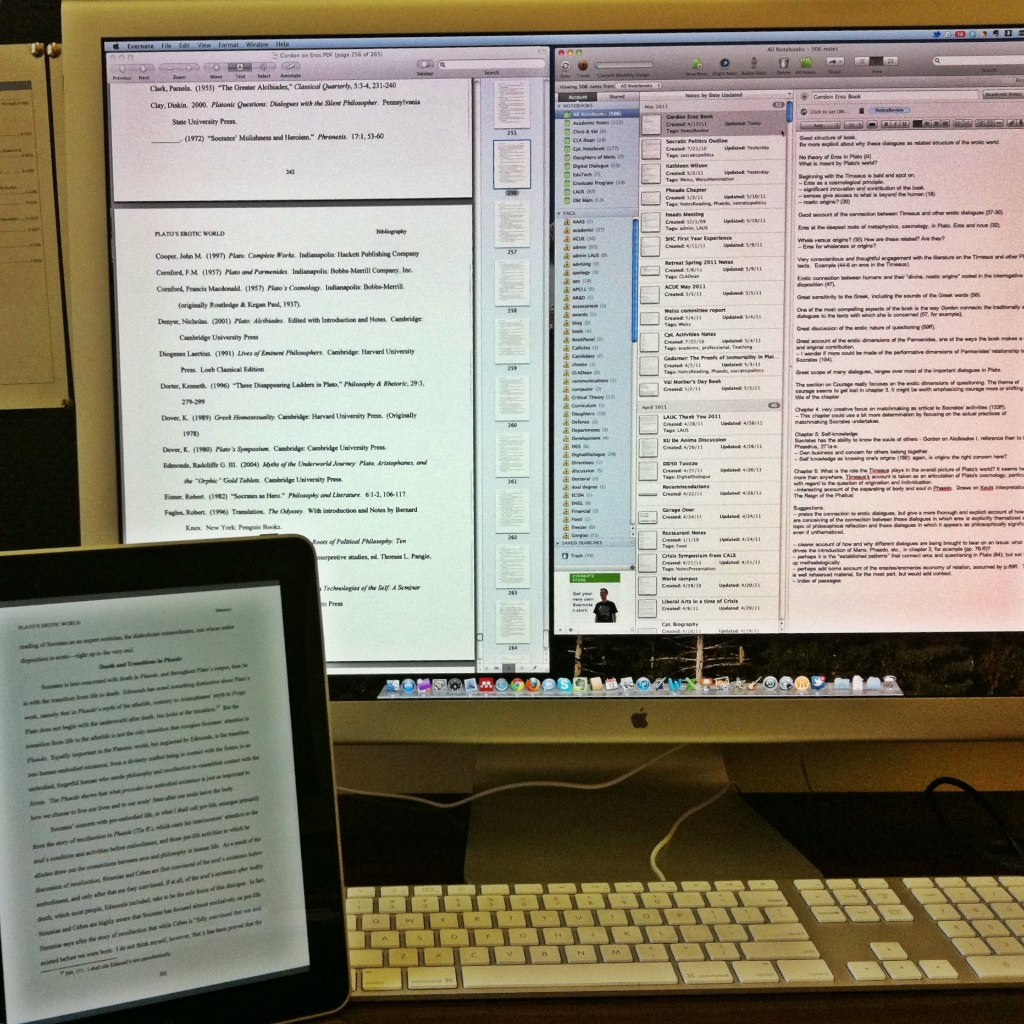In April 2010, I began blogging about closing the digital research circle. The iPad had just been released and I had just moved from Endnote to Zotero to take advantage of its ability to share collections and foster collaboration. It was a heady time and I was excited by the possibilities these new technologies offered for a completely digital research cycle.
The hope was to be able to move through the gathering, annotating, note taking, crafting, writing and citing phases of my academic research without printing or interacting with paper.
Over the last three years, I have pursued various strategies to accomplish this, as you can see if you follow the Digital Research category on this blog.
There you will find a rather long, but ultimately doomed infatuation with Mendeley, and a brief encounter with Sente, the beloved bibliographic program of @Targuman (you can read his take on Targuman.org).
Slowly, however, I returned to where I began, with the iPad and Zotero, running through the ZotPad app. Zotero is an open source solution that fits the spirit of openness in which I have been attempting to pursue my academic research for the past five years. ZotPad on the iPad (and the iPhone) offers me easy mobile access to all my documents; and now it also affords me the ability to take notes that sync back, along with the documents, to Zotero on the desktop.
I created a Prezi to illustrate how my digital research has come full circle.
To walk you through the process as you click through the Prezi, here are the four phases (assuming that you have installed Zotero with the plugins for the browser and word processor and that you have Zotpad running on the iPad and iPhone along with GoodReader):
- Gathering: Browse to an article or book in a database or website and use the icon that appears in the address bar to easily import the reference, and with it the pdf file, into your Zotero Library. You may need to run Optical Character Recognition (OCR) on the pdf file to render it searchable, which you can do with Adobe Acrobat Pro.
- Annotating: Once the reference and file are in your Zotero Library, they sync with ZotPad, which integrates well with GoodReader. In GoodReader, you can easily annotate the text with highlights and notes. You can also take notes in ZotPad that will sync back with Zotero. When you are done annotating, you can save the file back to ZotPad form GoodReader (I usually save the file “as is” as opposed to flattening it.)
- Writing: I use Scrivener to take notes on readers oriented toward what I am writing, as opposed to notes simply about the reading itself. Identifying this difference between taking notes about the text and taking notes on the text for what I am writing is critical. I use ZotPad and GoodReader for the former, but Scrivener for the later. In this context too, I integrate a research assistant (often an undergraduate) into the workflow to helps me identify new references and gather the references I already have.
- Citing: Zotero makes it simply to site anything in your reference library in any style desired by a journal. Zotero has an enormous Style Repository where you are likely to find more styles than you will ever need.
Those are the phases by which I am finally able to close the research circle from Gathering through Annotating and Writing to Citing, and ultimately Publishing, without using paper at all.

